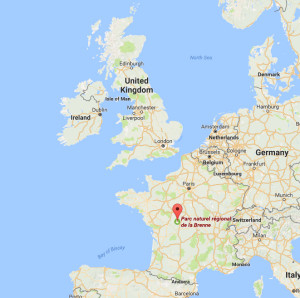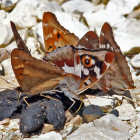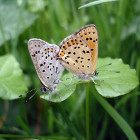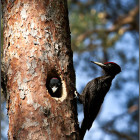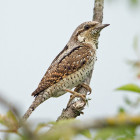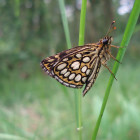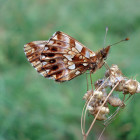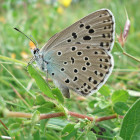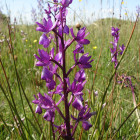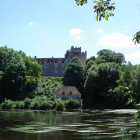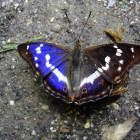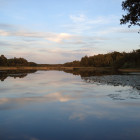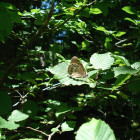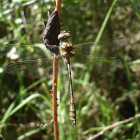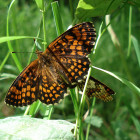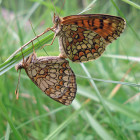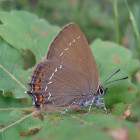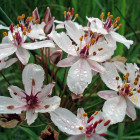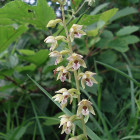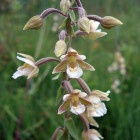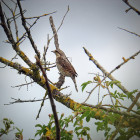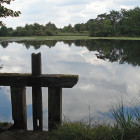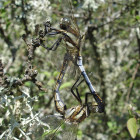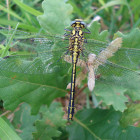Dates & Prices |
BOOK NOW |
Dates: May – June 2027 (dates TBA)
Price: £1,645 places available
Single Room Supplement: £175
Deposit: £150 per person
Price Includes: All meals, accommodation with private facilities, ground transport, services of the guides, holiday report
Not Included: International travel, travel insurance, drinks & any other personal items
Conservation Donation: Butterfly Conservation Europe
Leader: Jason & Emilie Mitchell (1 leader for 8 or less)
Group Size: Minimum of 4 and a maximum of 12 guests plus 1-2 leaders
Grade: Gentle pace. Ideally suited to photography
Holiday Highlights
- Enjoy a truly relaxed wildlife holiday with minimal travelling and maximum time in the field
- Rich birdlife, including Bee-eater and Whiskered Tern nesting colonies, also Hoopoe, Golden Oriole, Short-toed Eagle, summer-plumaged Black-necked Grebe and nine species of heron regularly recorded
- See up to 50 species of butterfly, such as Swallowtail, Large Chequered Skipper, Lesser Purple Emperor, Marbled Fritillary, and the rare Woodland Brown
- Dragonflies! Almost 70 recorded in La Brenne, including Broad Scarlet, White-tailed Skimmer and Small Pincertail
- Plenty of flowers too, with 36 orchid species recorded in La Brenne
- Relaxed pace suitable for photography & full enjoyment of the area for its scenery and wildlife
- Contribute to Butterfly Conservation
Relax and explore the wildlife rich surrounding of La Brenne Natural Regional Park at leisure!
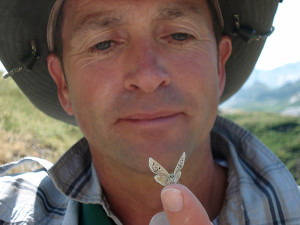 Holiday Guide
Holiday Guide

Jason Mitchell was born and raised in Devon where, from an early age he developed a passion for birds and other wildlife, especially dragonflies and butterflies. From his earliest volunteering experience on the Exe Estuary he dreamt of working in conservation and after returning to education in his mid-twenties, graduated from Plymouth University and started work for the RSPB as a warden on the East Devon Pebblebed Heaths. Since then he’s worked on various conservation projects for local government and the Wildlife Trust. In 2010 Jason returned to the RSPB as Warden for the North Kent Marshes.
In June 2013, he moved to La Brenne in France with his wife and young family in pursuit of a new challenge. La Brenne was an obvious choice for Jason; his wife is French and having visited the Loire Valley over many years fell in love with the ‘Land of a Thousand Lakes’. Now well established, he works as a tree surgeon in the winter months and a nature guide in the summer. Specialising in wildlife tours within France, he also leads across Europe, having done so since 2007.
Often called the Land of a Thousand Lakes, La Brenne Natural Regional Park (a status similar to a National Park in UK terms) is a hidden wildlife gem located in Central France just south of the Loire Valley. A mosaic of fish ponds, lakes, reedbeds, flower-rich meadows, heaths and broad-leaved forest set in a traditional farmland landscape makes for a uniquely diverse flora and fauna. Yet the Park is not vast, totalling 166,000 hectares and is roughly 30 by 40 miles across. As such, La Brenne can be explored without the need for long periods on the road and its well-maintained network of small, hedge-flanked roads give easy access across the Park. Birds provide significant interest at any time of year but the spring and early summer are most productive. Members of the heron family are particularly well represented with nine species on offer during the summer; Little Bittern breed in small numbers, whereas Purple, and Night Herons are common. Garganey and Red-crested Pochard are some of the more eye-catching ducks and other water birds include the Black-necked Grebe. The latter is one of La Brenne’s most important species as it holds well over 10% of the French breeding population and in a good year, 200 pairs of this stunning grebe nest here. Another important bird and one synonymous with the Park, is the Whiskered Tern; La Brenne is nationally important for this elegant species with up to 1000 pairs nesting in colonies on floating water lilies. Birds of prey are also a feature; Black Kite are particularly common, while Honey Buzzard, Short-toed Eagle, Hen and Montague’s Harriers are not difficult to find. A number of farmland bird species once common in the UK are still regular breeders, Turtle Dove, Corn Bunting, Quail and Stone Curlew are all well distributed. Unlike in the UK, the Turtle Dove is still common, and its soft purring song is a feature in any favourable habitat. The passerines hold some pleasant surprises too, dozens of warbler feature with Savi’s, Melodious, Bonelli’s and Great Reed Warbler, some of the stand-out species. While Red-backed Shrike, Black Redstart, Serin, Hoopoe, Golden Oriole, Nightingale and Cirl Bunting can all be found in the UK, they are widespread and common in La Brenne. Perhaps one of the region’s most spectacular birds is the Bee-eater and no trip is complete without a visit to one of their busy breeding colonies. With large areas of traditionally managed farmland and forest, with associated meadows, wetland and heath, butterflies abound; an impressive 97 species have been recorded across La Brenne. For the visiting naturalist, some of the more exciting butterflies include Scarce Swallowtail, Camberwell Beauty, Lesser Purple Emperor, Southern White Admiral, Map, Pearly Heath, Large Chequered Skipper, Great Banded Grayling, Woodland Brown, Ilex Hairstreak, Sooty Copper, Large and Alcon Blues. Several Fritillary species occur: Knapweed, Glanville, Heath, Marsh, Weaver’s, Meadow and Marbled are generally common by mid-summer. Species which occur in the UK in small numbers or as rarities, are often frequent in La Brenne and include Berger’s Clouded Yellow, Short-tailed Blue, Swallowtail and Black Hairstreak. During a typical week-long summer tour it’s possible to notch up more than half the ‘Brenne list’! As you would imagine, with so much wetland habitat available, dragonflies are common and almost 70 species have been recorded in La Brenne; to put this into context, the entire UK list totals a little more than 40 resident species! In addition to several dragonflies also found in the UK, a number of exciting continental species are on the wing by the summer months, including the Dainty Bluet, Blue-eye, Migrant Spreadwing, Orange-spotted Emerald, White-tailed Skimmer, Scarlet Darter, Yellow and Western Clubtails and Small Pincertail. For the botanist there’s much interest too, particular where orchids are concerned with an impressive 36 different species growing within the Natural Regional Park. Naturally, not all are in flower at the same time, but it’s not uncommon to record twenty in a week during the height of the season. This is a fantastic and very popular tour – we recommend booking early to avoid disappointment!
The following itinerary is not set in stone and may change in response to the weather forecast and prevailing conditions. La Brenne natural regional park is approximately 30 by 40 miles and most planned visits are within a short drive of our hotel meaning we won’t spend long periods travelling between sites. After breakfast, the day will commence at a leisurely pace around 9.00am. Following our morning visit and weather permitting, we will enjoy our picnic lunch under the sky. Fed and watered, we continue our quest to see La Brenne’s unique wildlife before returning to our accommodation around 5.30pm, where you will have plenty of time to freshen up ahead of a sumptuous meal prepared by our resident chef and host.
Day 1: Arrival & meet in Tours
Our flight arrives into Tours airport. From here we will drive to La Gabrière by minibus, with the journey lasting around an hour and a half. After settling into your rooms, we will enjoy our first dinner together where we will discuss the week ahead.
Day 2: Grande Brenne
During our first day in the field, we will visit a number of La Brenne’s numerous small lakes (étangs). Many are protected for their rich wildlife communities; Black-necked Grebe, Garganey and Whiskered Tern all breed, the latter can be seen hawking for insects almost anywhere in the Park. During May, Great Reed, Melodious and Savi’s warblers will be in full song. An avian feature of La Brenne is the wide variety of breeding herons, nine species in total, including Little Bittern, Squacco and Purple Herons. We plan to visit a tower hide at Bellebouche where we’ll enjoy the sights and sounds of nestling herons and egrets clambering around in the willow trees while eagerly awaiting their next meal.
Day 3: Lancosme Forest
A short drive towards the eastern boundary of the natural regional park, will find us exploring a large forested area which is noted for its abundance of wild flowers including many species of orchid; close to 40 species can be seen over the spring and summer months. The forest is also excellent for butterflies and if the season is ‘on schedule’, we hope to see an early Woodland Brown, a European Protected Species and one of France’s (and possibly Europe’s) rarest butterflies. A number of small streams wind their way through the woodland and open stretches are home to both Beautiful and Banded Demoiselles and these are often joined by species absent from the UK, including the White-tailed Skimmer.
Day 4: Suin Valley
Today we’ll head south to a limestone area well known for its rich flora, and this in turn makes for a diverse butterfly fauna. One of our targets will be the attractive Black Hairstreak and other exciting species regularly encountered include Pearly Heath and Weaver’s Fritillary. Birds are never far away and several raptors breed locally; we may be lucky enough to catch sight of the fascinating Honey Buzzard or the dashing Hobby. Other exciting birds include woodpeckers: Black, Middle-spotted and Lesser-spotted are often heard and occasionally seen and Golden Orioles are never far away.
Day 5: Creuse Valley
The river Creuse cuts its way through limestone and over millennia has formed impressive chalk cliffs along its shores. This has made for a unique microclimate rich in flowers. Most eye catching are the orchids and several species are to be found, including Greater Butterfly, Bee, and Fly. Grey Wagtails are common and Kingfisher are often seen as they zip past, piping noisily and river-side poplar plantations are enlivened by the flutey notes of Golden Orioles. The day will be topped by a visit to a river-bank colony of Bee-eaters, arguably Europe’s most exotically coloured bird species.
Day 6: Brenne bocage
Today we will head out in search of birds and other wildlife associated with arable, pasture and meadows. Cirl Bunting and Stone Curlew are sought after species in the UK but in La Brenne both remain quite common. Another exciting bird likely to be encountered is the Montagu’s Harrier which quarter the fields in search of prey; along with Hen and Marsh Harriers the three have been known to use the same hunting areas. Hedgerows are a good habitat for a number of passerines; both Red-backed Shrike and Melodious Warbler are common and Quail is frequently heard giving its characteristic “wet-my-lips” song from deep cover within arable fields. Other farmland species, like the Turtle Dove, Corn Bunting and Woodlark are still easily found in La Brenne.
Day 7: Brenne re-visited
For our final full day in La Brenne we leave things a little more open-ended and our visits will likely see us return to some of our favourite sites from earlier in the week, perhaps in an effort to catch up with a species or two that escaped us the first time around. No doubt we will also visit some new areas in the heart of La Brenne which has so much to offer. Our pace is always leisurely but today especially so and this should leave time to enjoy an extra coffee or ice-cream somewhere!
Day 8: Departure
A leisurely departure from our hotel will see us arrive in Tours in good time from where we will take our return flight to the UK.
Sandra & Tony F, 2018…We had a fabulous time, the best so far. Jason is an amazing guide and a really nice chap. Time to plan the next one!


